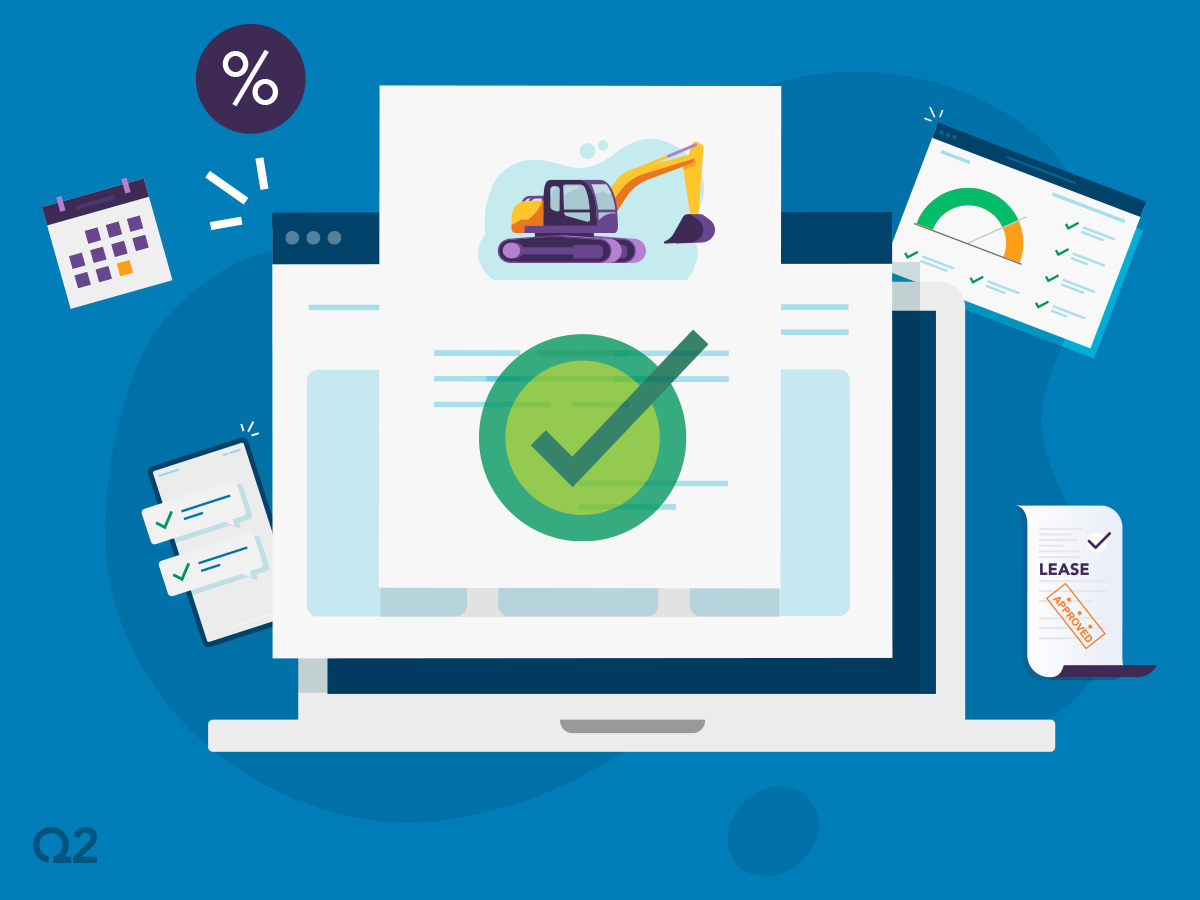Part of the Beyond Transformation series
With Ian Nelson, Sales Director, Q2 EMEA
If there’s one thing we’ve learned from 2020, it’s that business as usual has changed. As financial institutions increasingly feel the mounting pressure of low interest rates, legacy technology systems, and bad debt, they need to take the critical lessons learned from the pandemic and quickly transition them to effective business strategies for 2021.
This series with Q2 thought leaders addresses the ongoing challenges faced by commercial institutions at this pivotal time. They will offer key insights on surviving the current business environment and how to thrive in the years to come.
Digital transformation at the core.
Leasing has historically been a few steps behind in the fintech revolution, and the uptake of digitalisation seen in retail and SME lending has been slower to evolve across the leasing world. However, with new innovators entering the market this is changing and digital transformation will remain a key trend in leasing over the next couple of years. In the short-term, new leasing innovators and incumbents alike will be looking to accelerate digital transformation and collaboration, as demonstrated by a recent PwC survey, which states that “86% of UK CEOs (78% globally) believe the shift towards remote collaboration and digital transformation will endure”.
Following the 2008 global financial crisis, many turned to peer-to-peer and payday lenders who now have very limited traction in the market. Nelson identifies that there is a significant opportunity for lessors to grasp digitalisation and move forward with compelling finance offers not offered elsewhere. But digital transformation will be at the heart of future growth.
Accelerating innovation.
A recurring theme throughout the pandemic is the need for institutions of all sizes to be focused on their digitalisation strategies. Different from the global financial crisis in 2008 where the lack of liquidity was the critical issue, today lessors face a new set of challenges, namely, how to create an effective collections approach to bad debt. Adopting digitalisation, though requiring an upfront investment, careful vetting, and leadership alignment, has an undeniable long-term impact on profitability and growth. As Nelson identifies, “Lessors, be they bank owned, captives or independents will be looking towards digital innovation to deliver long term benefits such as cost savings, greater employee wellbeing, and superior customer relationships.” This trend will only continue to grow as companies see their competition winning market share and retaining more customers through a focus on digitalisation.
The bad debt challenge.
While there are inevitably many competing priorities facing lessors at this time, at the top of mind for all of them is the mounting wave of bad debt. As Nelson puts it, “Lessors must understand how to structure collection strategy with empathy built in – this should serve well for managing cashflow, future growth prospects, and importantly, strengthen customer relationships.” The days when collections departments could expect a happy and thriving customer base are now missing as the pandemic negatively affects many organisations’ finances. Asset finance providers must now be more intimately in touch with the needs and specificities of their clients. This new approach will engender greater trust and longer-term relationship-building. Other related considerations include allowing flexible payment schedules and deferrals.
A better customer experience.
When we talk about providing a truly exceptional customer experience, it could be assumed that means prioritizing person-to-person interaction. However, the pandemic brings a now higher prioritization: the need for automation. While modern, SaaS systems will never replace the need for human touch in some areas of the business, they do provide critical advantages for operational efficiency, especially in the present situation we face.
As Nelson notes, “Even before the pandemic, the most innovative lessors were adopting automation to connect departments, remove tedious manual steps and streamline processes.” With staff freed up from repetitive, lower-level tasks, they can be reallocated towards higher value and more strategic functions. Achieving the balance of this hybridized operational format, while difficult to navigate on the onset, is how you create a compelling and sustainable customer experience in the next normal.
Be it pursuing alternative funding sources, addressing bad debt before it becomes overwhelming, or reimagining the customer experience, this is how continue moving forward during the pandemic and laying a path to success in 2021 and beyond.
Additional resources
To learn more about how asset finance organizations can move forward with digital, read Q2’s Top tips for succeeding in the digital landscape. And help your organisaton continue to evolve faster through automation with Q2 e-book The High Cost of Lending Uncovered.





